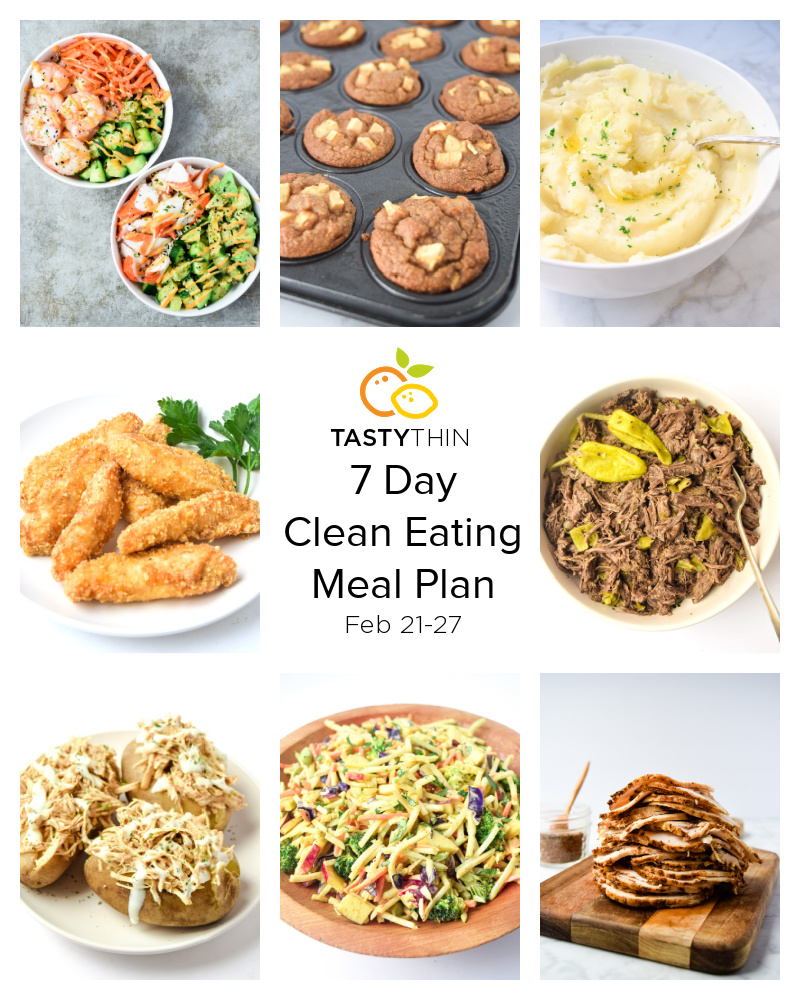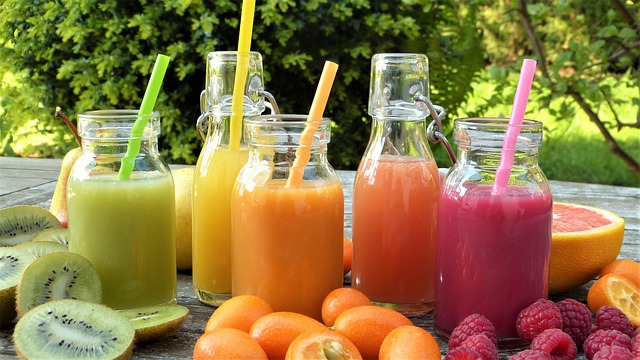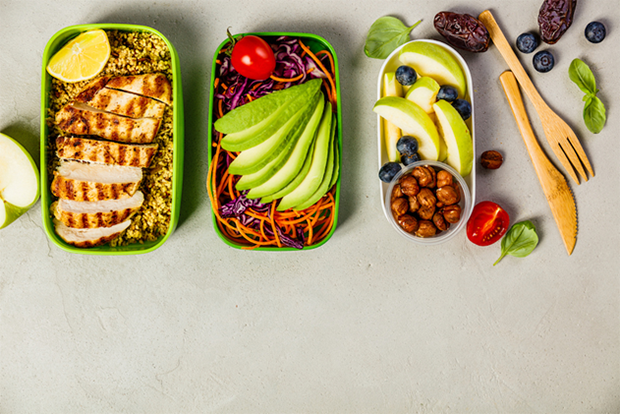
You can easily increase your protein intake to meet your daily dietary requirements. Protein is a macronutrient that provides structure to the cells, helps with hormone synthesis, and helps your body maintain lean muscle. There are many foods that contain protein, such as fruits, vegetables and legumes. Many of these foods can be prepared in a few minutes, which makes them a great way to increase your protein intake.
You can increase the protein content by adding nut butter to a salad or powdered peanut butter. This is an easy and quick way to increase your dressing's protein content without cooking. A second way to increase the protein content in a protein salad is by adding seeds and nuts. You can either add them to the whole grains or make a salad dressing. You can also make your own salad dressings that are protein-rich.
You can increase the protein content of salads by adding beans to them. The beans can be substituted for one ounce of meat by adding a quarter cup of beans. They are also good with fresh vegetables. To enhance the protein content, you could also use a dressing made with tahini.

Also, breakfast should include protein-rich food. In the morning, you can find protein-rich seafood and eggs. If you are a vegetarian, you can also add protein into a cereal bowl with yogurt or berries. You can also add peanut butter powder to your smoothies, muffins and oatmeal to provide protein. These protein options are easy to find in your fridge, freezer, pantry, and can be added to your lunch or dinner.
Shredded white-meat chicken is another great source of protein. This can also be used as a filling to make sushi/ricepaper rolls, salads, and tacos. You can also make protein rich meatballs for your child's school lunch. These can be kept warm by placing them in an insulated container.
Use cooked fish to increase the protein level in southwestern salads. You can add fresh dill, low-fat mayonnaise, or a sprinkle of salt. This recipe is healthy and delicious. It is also quick and simple to make. You can also add chopped onions to the fish for extra flavour.
Gussied up cereal with nuts and berries is a protein-rich option for breakfast. You can also add powdered peanut butter to oatmeal, muffins, and smoothies. Yogurt can be added to salad dressings to provide protein. Mixing cereal with fruit can make a protein parfait. These quick and easy protein ideas are easily found at your local supermarket or in your refrigerator. You will also find reduced fat cheeses made with only 2% milk in your local grocery stores.

A protein box is a container that includes a hard-boiled egg, other breakfast items, and can be kept in your car. A protein shake or smoothie can be made with peanut butter powder and fruits. A variety of protein-rich foods can be added to your lunch box, such as grilled meat or pork.
FAQ
What makes a vegan diet different from other diets and how can it be improved?
A vegan diet doesn't have meat, milk, or eggs. This makes it different from other diets. This means that vegans cannot eat milk, cheese, or butter.
Vegans don't eat any meat, fish, poultry or dairy products. This is the main difference between vegan and other diets. Vegans may refer to themselves simply as vegetarians.
Vegans also avoid consuming honey, gelatin, leather, wool, silk, feathers, fur, cosmetics tested on animals, and most processed foods.
Veganism is a dietary choice that promotes compassion for animals and environmental sustainability. Veganism rejects animal products due to the suffering and death of factory farms and the damage that is done to animals by hormones, antibiotics, or other chemicals during slaughter.
Veganism promotes vegetarianism. It is about reducing the consumption of animal secretions and flesh.
Vegans generally eat a plant based diet. However they do consume small amounts seafood like nutritional supplements, fruits, veggies, seeds, and grains.
Because vegans exclude meat, fish and poultry, they are often called "vegetarians". Technically, vegans should not eat any animal products including eggs and dairy, but the term vegan is often used to describe those who strictly avoid these three categories.
Many people who call themselves vegans eat less that five ounces of meat per day (roughly 1/4 pound).
Some vegans may include eggs and dairy products in their diets to get sufficient protein intake, but this is not common practice.
Lactoovo vegetarians avoid meat and eat dairy products. They also eat some chicken, fish and shellfish. These people can be classified flexitarians with regard to meat, but strictly adhere the vegetarian lifestyle.
Ovo-lacto vegetarians avoid red meat and eat dairy products and eggs. They may also eat some poultry, shellfish, and fish.
Pescatarians are vegetarians who eat fish. Pescatarians need to be careful about their cholesterol because fish has a high-fat content. They tend to only eat low-fat, non-fried varieties.
The two main types of vegans are: flexible and strict. Vegans who are strict abstain completely from all animal products, including dairy and eggs. Flexible vegans limit how many animal products they consume. They might only eat one egg per week or prefer to drink skimmed milk over whole milk.
Health-conscious consumers have been increasingly turning to plant-based diets in recent years as they seek to lose weight, manage cholesterol, lower blood pressure, improve their diabetes management, live longer, and prevent heart disease. Between 2007 and 2010, the number of Americans who eat a vegan diet increased by 50%. According to industry estimates, the number of vegans in America had reached 2.5 million by 2016.
What is a good 30-day diet?
Fast weight loss is possible by eating three meals per day. Each meal contains approximately 2000 calories. These meals should contain protein, carbohydrates, as well as fat. Protein provides energy and helps you feel fuller for longer. Carbs help fill you up faster and provide energy. Fat helps you feel satisfied and provides energy.
-
It is important to eat all meals. Avoiding breakfast will make you more likely later in your day to eat too much. If you do skip breakfast, make sure you replace it with an apple or banana. This will give you the exact same amount of energy with no empty stomach.
-
Avoid eating after 6 pm. It is easier to snack the next morning if you don't eat at night. High-calorie snacks are more likely to gain weight.
-
Avoid processed foods. Many processed foods contain high amounts of sugar, salt, and saturated fats. These ingredients raise blood pressure and increase the chance of developing heart diseases.
-
Get lots of fruits, vegetables and other healthy foods. The fiber and calories in fruits and vegetables is low. Fiber fills you quickly and slows your digestion. You feel fuller for longer periods of time.
-
Don't drink alcohol. Alcohol increases inhibitions and encourages excessive eating. Additionally, alcohol can reduce insulin effectiveness which is vital for breaking down carbs.
-
Limit caffeine. Caffeine stimulates the nervous and adrenaline systems. Both of these factors result in increased appetite.
-
Get enough water. Water helps flush out toxins from your body and keeps it hydrated. Drinking plenty of water also prevents dehydration. Salty snacks are more common in dehydration.
-
Keep active. Exercise can increase endorphins and make you happier. Exercise can also increase metabolism, which means you will burn more calories.
-
Get enough sleep. Sleep improves mood and concentration. It also helps improve memory and learning skills. Insufficient sleep can lead to fatigue and excessive eating.
-
Take supplements. Multivitamins can be taken daily to obtain essential vitamins such as Vitamin B and Vitamin D. Fish oil capsules are high in omega-3 fatty acid. Omega 3's improve brain function and reduce inflammation.
-
Take care. Maintain a healthy weight by exercising regularly and maintaining a proper diet. Avoid bad habits like smoking and drinking too much alcohol.
Which strategy is most effective for weight loss or weight maintenance?
While weight loss and weight maintenance strategies look very similar, there are still some differences.
Weight loss is all about losing weight. Weight maintenance is all about maintaining the weight you have lost.
The main difference between the two is that when you lose weight, you are trying to shed pounds, whereas when you maintain the weight, you are trying to keep them.
Both require dedication and discipline. Weight loss requires you to be more active in order to make it happen, while weight maintenance is easier. It is important to be disciplined.
In both cases you need to ensure you eat healthy foods and that you exercise regularly.
Weight loss is possible if you change your eating habits and engage in regular exercise.
Whereas weight maintenance is much simpler because you have to stay disciplined. It is important to eat healthy foods, exercise regularly, and maintain your weight.
Which one should you choose? The best way to decide is by taking into account your current lifestyle.
It is possible to lose weight if you only eat fast food every now and again and do not exercise as much.
Maintaining your weight can be more rewarding if you eat healthy meals and exercise frequently.
Personal preference is ultimately the deciding factor.
It's important not to assume that losing weight means you have to lose weight.
Losing weight can make your life easier and more enjoyable.
For weight loss, change your eating habits, and get regular exercise.
You'll get results faster than you ever thought possible.
What foods cleanse the arteries?
The best way to keep your heart healthy is to eat right. But what does that actually mean? There are many methods to accomplish this. One way to do that is to eat a lot more fruits or vegetables.
Antioxidants found in fruits, vegetables and other foods help prevent and treat disease. Antioxidants help to reduce inflammation, which prevents clogged arteries.
There are other ways you can reduce your cholesterol. If you cut back on saturated fats (like butter) and trans-fatty acids (found in fried food), you'll lower your chances of having a heart attack.
Fiber can be increased to keep blood moving smoothly throughout the body. LDL (bad cholesterol) is also reduced by fiber, which can lower your risk of developing cardiovascular problems.
Your heart health is not only affected by what you eat. There are many other factors as well. Stress, smoking, obesity and alcohol consumption all play a part in your risk of developing heart disease.
Talk to your doctor if there are any concerns about your risk of developing cardiovascular diseases. You might have to take medications or make lifestyle adjustments to remain healthy.
How much food should I eat each and every day?
Calorie needs vary depending on age, gender, activity level, size, and overall health status.
Adults need between 1,200 to 1,800 calories daily to maintain their weight.
Calories can be obtained from carbohydrates (starchy food), protein, or fat.
Carbohydrates are composed of glucose and fructose. Glucose, the primary energy source for our muscles, is glucose. Fructose supplies additional energy to our brains, nervous system and muscles. Sucrose contains both glucose and fructose, making it easier to digest than pure glucose or fructose.
Protein is necessary for building muscle mass, and healing damaged tissues. Protein can come from meat, poultry or eggs, as well milk, cheese and yogurt.
Maintaining good health requires fat. Fat helps keep you fuller for longer and provides vital vitamins and minerals like vitamins E, D, and K, omega-6 and monounsaturated oil.
Fat also protects against cardiovascular diseases, high cholesterol, and many cancers.
Experts suggest that saturated fats should not exceed 30% of total calories.
However, there are no studies that show reducing saturated cholesterol will lower your chances of developing cardiovascular disease.
A healthy diet should contain 20-35% of your daily calories from carbohydrates, 10%-35% from proteins, and 35%-50% of fat.
What are the 5 keys to a healthy diet?
It is a common saying that "you are what your eat." Healthy eating habits are made up of five essential elements.
These include eating plenty and vegetables, avoiding processed and refined foods, drinking lots and water, regular exercise, and limiting alcohol.
The first three items are essential for overall health, while the last two are important for maintaining weight control.
These nutrients should be included in your daily meals to ensure you get them.
Your diet should include fresh fruits, whole grains, and leafy greens. These foods are rich in vitamins A, C and E that help prevent heart disease and cancer.
Avoid processed foods, especially those that contain artificial ingredients or preservatives. This includes soft beverages, candy bars as well cookies and chips.
Hydration is important for your body. Eight glasses of water per day will help you keep hydrated and prevent dehydration.
Healthy living is dependent on exercise. If you aren't active, you run the risk for obesity-related conditions like diabetes, heart disease and stroke.
Don't drink alcohol. The effects of alcohol on blood pressure, headaches, liver health, and blood sugar are all magnified by these drinks.
Follow these guidelines to live a healthier life.
Statistics
- Recommendation Saturated fat is less than 6% of total daily calories. (mayoclinic.org)
- In a review of studies, intermittent fasting was shown to cause 0.8–13% weight loss over 2 weeks to 1 year. (healthline.com)
- Half a cup of 1% cottage cheese has 14 grams of protein and only about 80 calories, so one portion is super protein-packed. (prevention.com)
- Another study in adults with obesity over 12 weeks found that the DASH diet helped decrease total body weight, body fat percentage, and absolute fat mass in study participants while preserving muscle strength (healthline.com)
External Links
How To
Healthy Eating Guidelines For Kids
To be healthy, children need to eat a healthy diet. Children who eat well tend to grow up to be healthier adults. Here are some guidelines that you should follow when feeding children.
-
Limit sugary drinks. Sugary beverages account for more sugar than half of the total sugar intake in children between 2 and 18 years old.
-
Limit juice. Juice is loaded with empty calories and little nutrition.
-
Avoid fried foods. Fried foods are high in saturated fats and transfats which can increase blood cholesterol and raise heart disease risk.
-
Whole grains are best. Whole grains offer important nutrients, such as dietary Fiber, B vitamins, magnesium and phosphorous, as well as protein, iron, and zinc.
-
Eat plenty of fresh produce. Fresh fruits and veggies are full of vitamins, minerals, fiber, and other nutrients. They also contain less sodium than processed or packaged foods.
-
Choose lean meats. Lean meat provides high quality protein without the calories and fat found in fatty cuts.
-
Be careful with snacks. Snacks are a great way to add extra calories and unhealthy ingredients into your meals. Many snack products are made with refined flour, hydrogenated oils, artificial colors, and preservatives.
-
Every day, ensure that your child has breakfast. Breakfast boosts metabolism and provides energy for daily activity.
-
Try out new recipes. Explore new recipes and see what you like. Try adding spices and herbs to dishes to change the flavor profile.
-
Get active. Physical activity is an important part of childhood. It improves mood, concentration, memory and mood. Exercise is also good for weight control.
-
Get outside. Make the most of nature's playground. Spend your time outdoors hiking, biking and swimming.